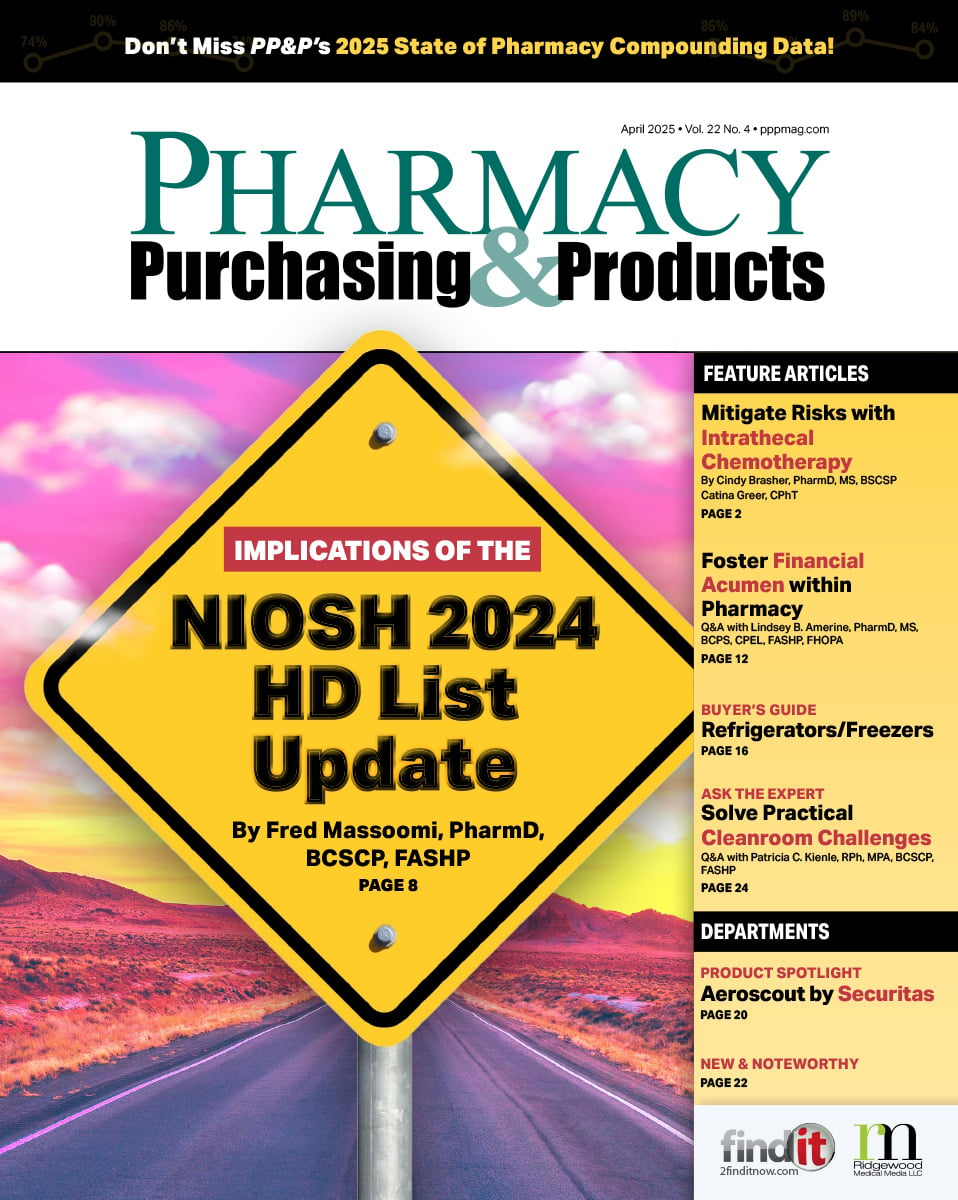- Show Menu
- Contact Us
- FAQs
- Reader Service
- Survey Data
- Survey Winners
- Testimonials
- Upcoming Events
- Webinars
- White Papers
Incentivize Employee Use of the Outpatient Pharmacy
Capturing a large portion of employee prescriptions is often the linchpin of a successful outpatient pharmacy operation. To attain this goal, a concerted effort is required to educate employees about the benefits of utilizing the outpatient pharmacy. Further inducements, including convenience and financial incentives, will help encourage employees to take advantage of on-campus pharmacy services.
Peninsula Regional Medical Center (PRMC) in Salisbury, Maryland, a 266-bed subsidiary of the Peninsula Regional Health System, has operated an outpatient pharmacy since 2013. Our reasons for opening the outpatient pharmacy were threefold:
- Improve care by ensuring patients leaving the hospital receive their life-saving medications
- Reduce 30-day readmissions related to drug therapy upon discharge, which has a strong impact on reimbursement
- Decrease overall prescription costs for employees in our PBM benefit plan
Our approach was to capture as many patient and employee prescriptions as possible. We detailed our patient-focused strategy in Pharmacy Purchasing & Products’ October 2019 issue (see pppmag.com/article/2460). This article focuses specifically on incentivizing employees to use the outpatient pharmacy.
Strategies Utilized
Gaining Trust
To build a prosperous outpatient pharmacy, it is essential that employees be incentivized to fill their prescriptions in-house. At PRMC, it took about 3 to 4 months after go-live to capture a significant percentage of employee prescriptions. When we evaluated why this timeline was significantly longer than anticipated, we noted that the previous pharmacy tasked with managing employee refills relied on automatic refills that did not take dosage changes or discontinuations into consideration, and in some cases, the refills had not even been requested. For example, some employees reported having 6 months’ worth of a given medication in their homes. This haphazard medication management practice initially soured employees’ opinions of the more regimented outpatient pharmacy program.
To change this attitude (and to reduce medication waste), we focused on providing employees with only a 30-day initial supply and then migrating to a 90-day supply once the patient’s status was reviewed and the regimen was determined to be effective. While the 30-day supply can be filled at any pharmacy, the 90-day supply can only be filled in the hospital’s outpatient pharmacy.
Education Campaign
Changing employee behavior required a sustained effort that relied on robust employee education to gain buy-in. To this end, we created multiple brochures that underscore key benefits of using the outpatient pharmacy, which we named Home Scripts (see BROCHURES 1, 2, 3, and 4). These visual aids serve to provide information detailing how to secure refills, illustrate the location of the pharmacy, and highlight our Friendly, Approachable, Knowledgeable strategy. The brochures were shared throughout the hospital so every employee would be aware of the value of the outpatient pharmacy’s services.
Communicating the financial benefits of the outpatient pharmacy is critical to encouraging staff participation. For example, we were able to offer staff significant discounts, including a reduced copay; generic medications from the outpatient pharmacy have a $10 copay, while the same medications sourced from a retail pharmacy carry a $20 copay.
Results
With the lower cost, increased convenience, and robust education initiative, our employees were quite motivated to use our service. In fact, from January through May of 2019 we realized a 91% prescription capture rate for non-specialty medications on almost 20,000 prescriptions and a 95% prescription capture for specialty medications on 300 prescriptions for employees.
Larger versions of all brochures are available at: https://tinyurl.com/ygelxeko
 Dennis Killian, PharmD, PhD, graduated from the University of Maryland-Baltimore School of Pharmacy, obtaining a PharmD in 1999 and a PhD in Pharmaceutical Sciences in 2001. He currently serves as director of pharmacy services at Peninsula Regional Medical Center (PRMC), in Salisbury, Maryland, where he has been employed since 2005. Dennis has also served as an associate professor of pharmacy practice and administration at the University of Maryland Eastern Shore (UMES) School of Pharmacy since 2010.
Dennis Killian, PharmD, PhD, graduated from the University of Maryland-Baltimore School of Pharmacy, obtaining a PharmD in 1999 and a PhD in Pharmaceutical Sciences in 2001. He currently serves as director of pharmacy services at Peninsula Regional Medical Center (PRMC), in Salisbury, Maryland, where he has been employed since 2005. Dennis has also served as an associate professor of pharmacy practice and administration at the University of Maryland Eastern Shore (UMES) School of Pharmacy since 2010.
 William C. Cooper, RPh, PD, received his BS in Pharmacy in 1984 from the University of Maryland-Baltimore School of Pharmacy. He currently serves as the ambulatory pharmacy manager at PRMC, where he has been employed since 1994.
William C. Cooper, RPh, PD, received his BS in Pharmacy in 1984 from the University of Maryland-Baltimore School of Pharmacy. He currently serves as the ambulatory pharmacy manager at PRMC, where he has been employed since 1994.
 Gregory K. Shaeffer, MBA, RPh, FASHP, graduated from the Temple University School of Pharmacy in 1974 with a Bachelor of Science in Pharmacy and the Temple University Fox School of Business with an MBA in 1988. He recently joined the faculty of the UMES School of Pharmacy as an assistant professor of pharmacy practice and administration. Greg is also the principal in Shaeffer Consulting Group, LLC.
Gregory K. Shaeffer, MBA, RPh, FASHP, graduated from the Temple University School of Pharmacy in 1974 with a Bachelor of Science in Pharmacy and the Temple University Fox School of Business with an MBA in 1988. He recently joined the faculty of the UMES School of Pharmacy as an assistant professor of pharmacy practice and administration. Greg is also the principal in Shaeffer Consulting Group, LLC.
Like what you've read? Please log in or create a free account to enjoy more of what www.pppmag.com has to offer.












